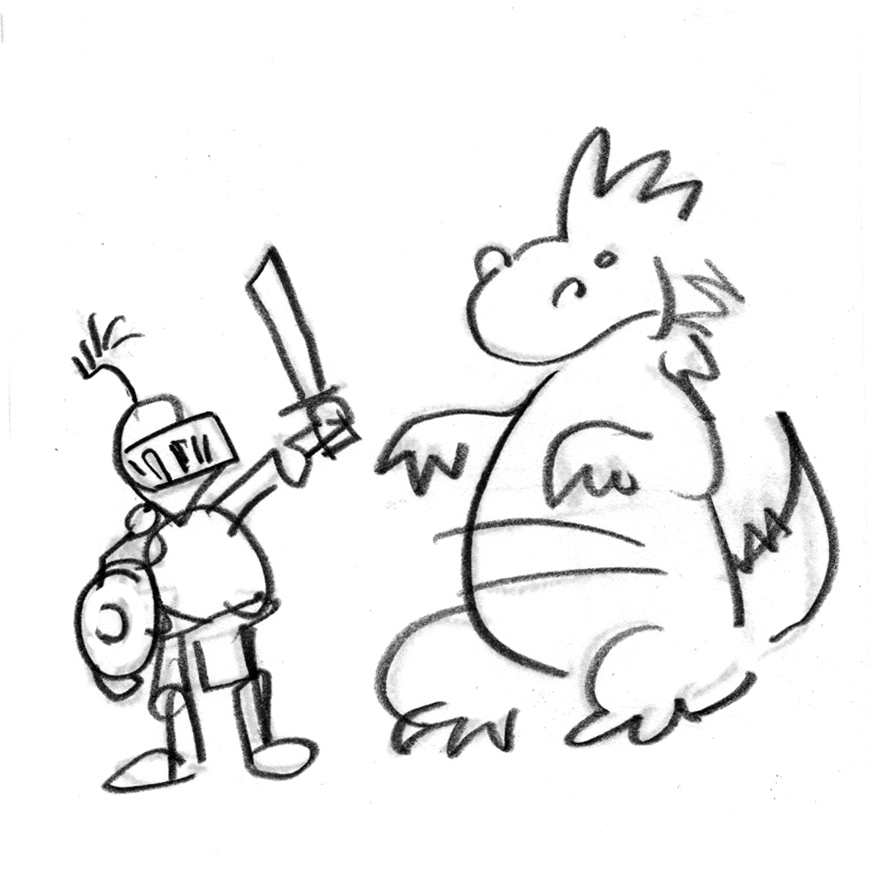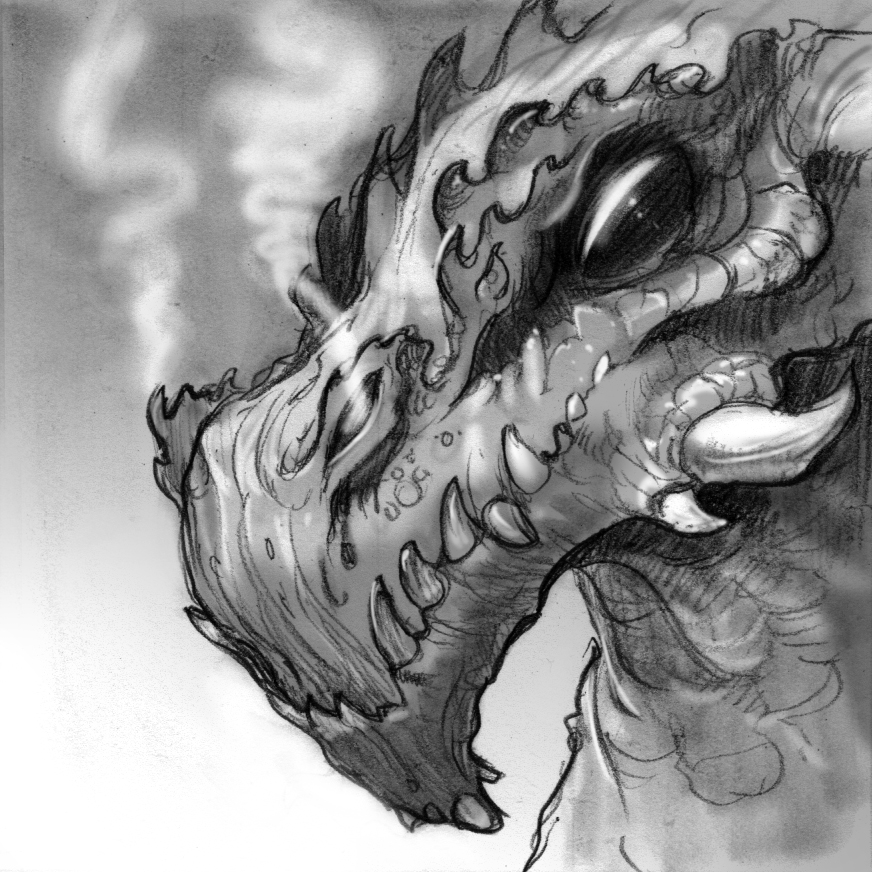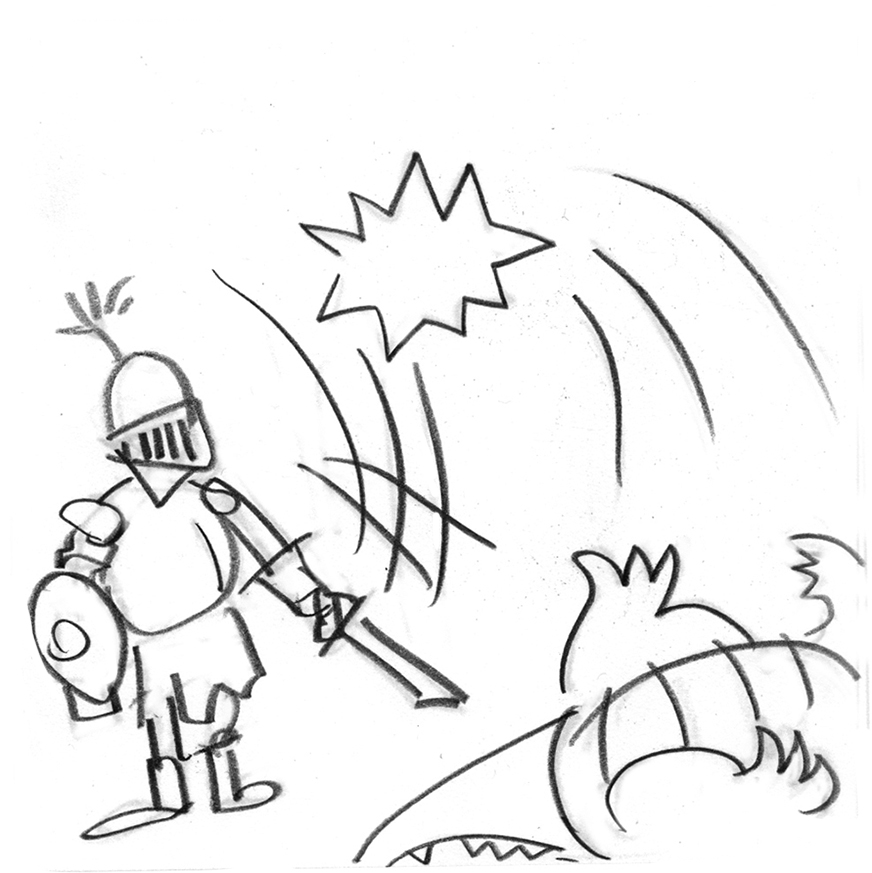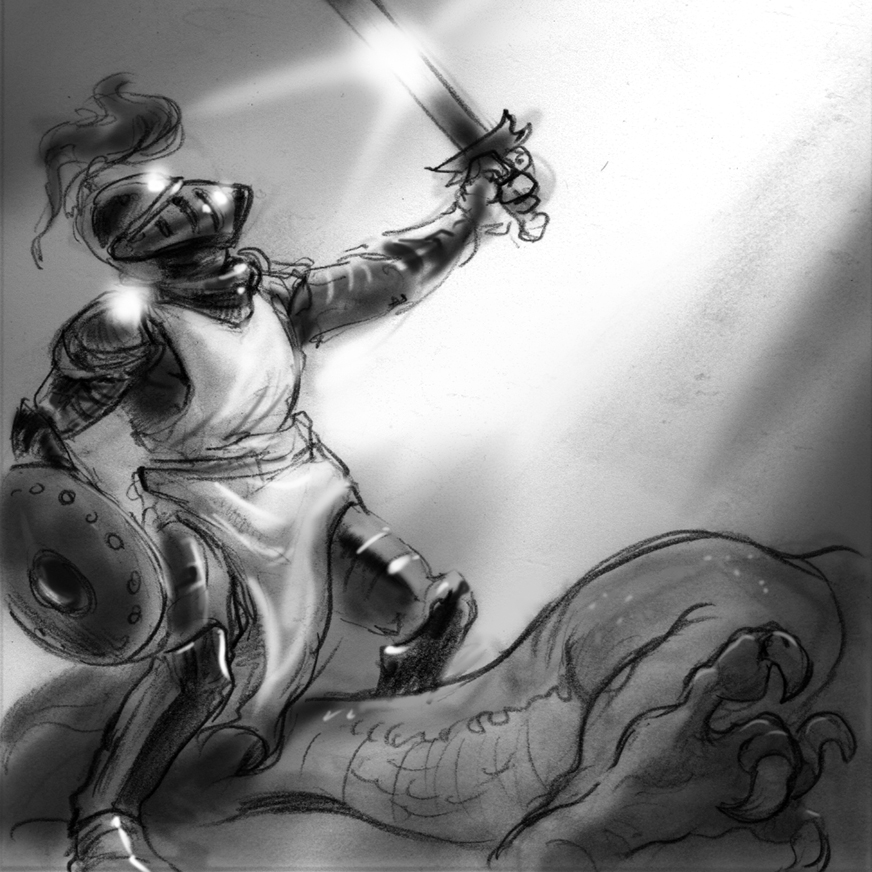
Descriptions are downright delightful for readers

When I first began writing stories, as a young and inexperienced elf, I wrote about what happened.
My stories went like this: This happened and then this happened and then this happened…
Now, that may not sound like the best writing, but it was an important first step! I was learning how to put stories in order! (I can’t tell a very good story if I don’t know how to tell it in an order that makes sense.)
And, once I know how to put stories in a fine order, it is time to work on descriptions. It is time to describe more of what there is to see in the story.
One way to practice writing descriptions is to write one sentence about something that happens and then one sentence describing the scene in some way. If you practice this, you will begin to sense how much actions and descriptions keep each other balanced in a well-written story.
Read this short story!

Sentence 1: The knight raised his sword against the dragon.
(Action)
———

Sentence 2: The dragon’s eyes narrowed and smoke began to rise out of his nostrils.
(Description)
———

Sentence 3: The knight took a mighty step forward and smote the dragon.
(Action)
———

Sentence 4: The knight stood victorious over the dragon, his sword glinting in the sunlight as the lifeless beast’s scales turned white and dull and began to fall away.
(Description)
———
New idea: Practice writing descriptions by writing one action sentence followed by one description sentence. Be sure to practice this if your stories have a lot of sentences that begin “And then…” Sentences that begin, “And then” are usually action sentences.
As you write more stories, and after you practice this pattern, you won’t even have to think about this much. You will write actions and then, without even thinking, you will add in descriptions for your reader.
As you can see, even in the shortest of stories, description sentences create vivid story pictures that make the actions far more riveting.
(Also, you may like this tip, about how words create pictures: See-Pictures-When-You-Write.)
This tip was inspired by the Fix-it-up Chappie.







